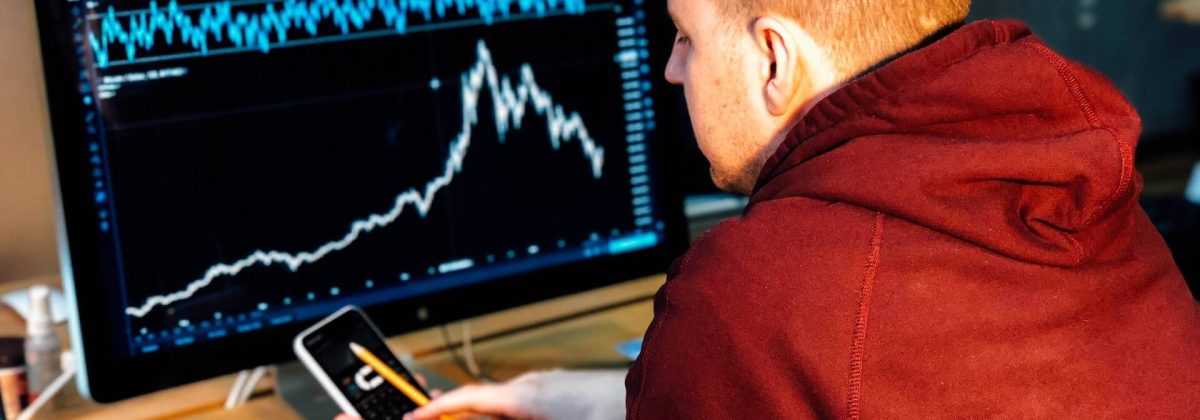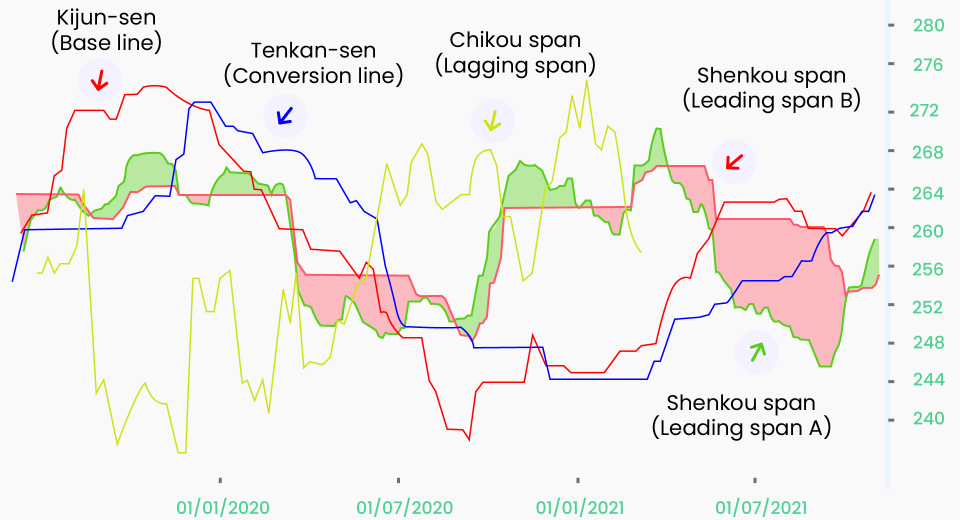How to Apply Elliott Wave Theory to Trading

The Elliott Wave theory, developed by Ralph Nelson Elliott in the 1930s, analyses long-term price trends and their association with investor or market sentiment. Elliott observed that the psychological impact on trading leads to asset prices following waves and cycles rather than moving in straight lines. He went on to state that these waves were fractal in nature and that the same patterns occur in both short- and long-term charts. More importantly, since these patterns tend to repeat themselves, they can be used as a means to predict future price moves.
How the Waves Form
Elliott identified two types of waves – impulse waves and corrective waves. According to his theory, the impulse wave moves with the price trend while the corrective wave moves against the trend. On a price chart, the first 5 waves form a larger impulse wave, followed by 3 corrective waves. Together the 5 and 3 waves form a cycle. So, according to the Elliott Wave theory, impulse waves could lead to the formation of higher highs and higher lows, indicating an uptrend, often followed by the formation of a lower high and lower low, which is a short-term correction to the trend.
In terms of market sentiment or psychology, when traders identify a bullish trend, they tend to go long in search of profits. However, after some time, the market might enter overbought territory or a state that we commonly call “buyer’s remorse” and selling pressure rises. This sends the price into correction.
Now, there are 3 unbreakable rules to the formation of impulse waves:
- The second wave must not retrace more than 100% of the first wave
- The third wave cannot be the shortest among Waves 1, 3 and 5
- The fourth wave cannot move beyond the third wave at any time
If any one of these rules is violated, the 5 sub-waves cannot be taken together to form a larger impulse wave.
It is important to understand when to start counting the formation of Elliott Waves. Most often, traders begin counting at an extreme swing high or extreme swing low. When the count is started at the extreme swing high, the following price movements are likely to be towards the downside. Similarly, when the count is started at the extreme swing low, the price is likely to move to the upside.
Elliott Waves with Other Indicators
Fibonacci ratios can be used to confirm Elliott Waves, especially corrective waves. This is because within each cycle, the number of sub-waves corresponds to Fibonacci numbers. So, in confirming a corrective wave, traders could check whether it might have retraced to the 38.2% or 61.8% level of the preceding impulse wave.
Elliott Waves can also be used along with the Relative Strength Index (RSI). Since RSI measures the strength of the ongoing price strength, it can be used to check the wave count. For instance, if the RSI crosses into overbought (above 80) or oversold (below 30) territory, it should correspond with the top of the third wave. For the fifth or last wave, the RSI should reflect a divergence, such as a lower high.
Elliott Waves can also be used with the MACD in the same way as it is used with the RSI. This means that MACD can be used to confirm the end of the third and fifth waves. MACD can also be used to confirm the end of the corrective wave.
Using the Elliott Wave Theory for Trading
Here’s a step-by-step guide to using this theory as a trading strategy:
Step 1: Wait till at least the third Elliott Wave is formed
To be able to effectively identify the direction of the underlying trend, it is important for the first 3 waves to form. By the fifth wave, you should be able to spot whether it is a bearish or bullish pattern.
Step 2: Check for Fibonacci retracement confirmation
Once the trend is confirmed, it is time to identify a viable entry point. Let’s assume that a bearish trend has been identified. In this case, wait for the fourth wave to retrace between the 38.2% and 50% level of the third wave. This area could present an entry point for a short position. Practice is needed to fine-tune the entry point, since it cannot be predicted whether the price will retrace all the way to the 38.2% level.
Step 3: Set your stop loss
Risk management is crucial to every trading strategy, including the Elliott Wave strategy. So, once the entry point is established, it is time to protect your trade with a stop loss order. If we continue with the bearish trend example, the stop loss order can be placed a few pops above the endpoint of the first wave.
If a bullish trend has been identified, the take profit level can be set at a price just below the end of the third wave or when the fifth wave is equal to the first wave.
The key to mastering any trading strategy is to practice. A demo account gives you the freedom to practice for as long as you need to gain confidence without having to risk any real money.
To Sum Up
- Elliott Waves are based on the impact of market sentiment on asset prices.
- Asset prices tend to move in waves and cycles, rather than straight lines.
- Elliott Waves consist of two types of waves – impulse waves and corrective waves.
- An impulse wave consists of 5 sub-waves, while a corrective wave has 3 sub-waves.
- Impulse waves must follow 3 unbreakable rules. Any violation negates the impulse wave.
- Elliott Waves can be used in conjunction with Fibonacci Retracement, RSI and MACD for confirmation of entry and exit points.
- An Elliott Wave trading strategy should be practiced and fine-tuned before being applied in the live markets.
Disclaimer:
All data, information and materials are published and provided “as is” solely for informational purposes only, and is not intended nor should be considered, in any way, as investment advice, recommendations, and/or suggestions for performing any actions with financial instruments. The information and opinions presented do not take into account any particular individual’s investment objectives, financial situation or needs, and hence does not constitute as an advice or a recommendation with respect to any investment product. All investors should seek advice from certified financial advisors based on their unique situation before making any investment decisions in accordance to their personal risk appetite. Blackwell Global endeavours to ensure that the information provided is complete and correct, but make no representation as to the actuality, accuracy or completeness of the information. Information, data and opinions may change without notice and Blackwell Global is not obliged to update on the changes. The opinions and views expressed are solely those of the authors and analysts and do not necessarily represent that of Blackwell Global or its management, shareholders, and affiliates. Any projections or views of the market provided may not prove to be accurate. Past performance is not necessarily an indicative of future performance. Blackwell Global assumes no liability for any loss arising directly or indirectly from use of or reliance on such information herein contained. Reproduction of this information, in whole or in part, is not permitted.




